Small fleet, big impact
Careful management of stretched resources has allowed a small increase in the time ships and submarines spent at sea and seen an expansion of the fleet’s global footprint. Most notably five vessels have operated in the Pacific this year. HMS Sutherland and HMS Albion have both completed deployments while HMS Argyll is currently in Japan after mid-deployment maintenance in Singapore. HMS Montrose is heading west across the Pacific, with her ultimate destination 3 years based in Bahrain. HMS Protector briefly visited Chile and is now on back in the Southern Ocean for further tasking in Antarctica. The strategic benefits of a small presence in the Pacific may be controversial but the ability to sustain such a global reach is impressive and makes a statement to allies and potential adversaries. While transiting the South China Sea, HMS Albion had an encounter with the Chinese Navy but few details of what transpired have been made public. How the world responds to Chinese flouting of international laws in the Pacific region is an issue that will not go away or be easily resolved. China is building almost the equivalent of the entire Royal Navy every year while US dominance is ebbing away. Its blue-water fleet will increasingly make its presence felt in oceans across the globe, China’s new superpower status is perhaps the defining geopolitical change for the coming decades.
In another demonstration of relative vigour, the RN participated in two major exercises simultaneously in October. Saif Sareea 3 with Oman and Trident Juncture with NATO partners in Norway. The Type 45 destroyers spent more time at sea than in the previous two years, the temporary measures to remedy propulsion issues are helping. HMS Daring will be the first to have her engine troubles permanently cured with the Power Improvement Package refit starting next year. HMS Duncan’s tense deployment in the Black Sea and the Eastern Mediterranean was featured in the TV Documentary “Warship – Life at Sea”, arguably some of the most positive and insightful media coverage the RN has generated in years, demonstrating what the RN can deliver at the sharp end.
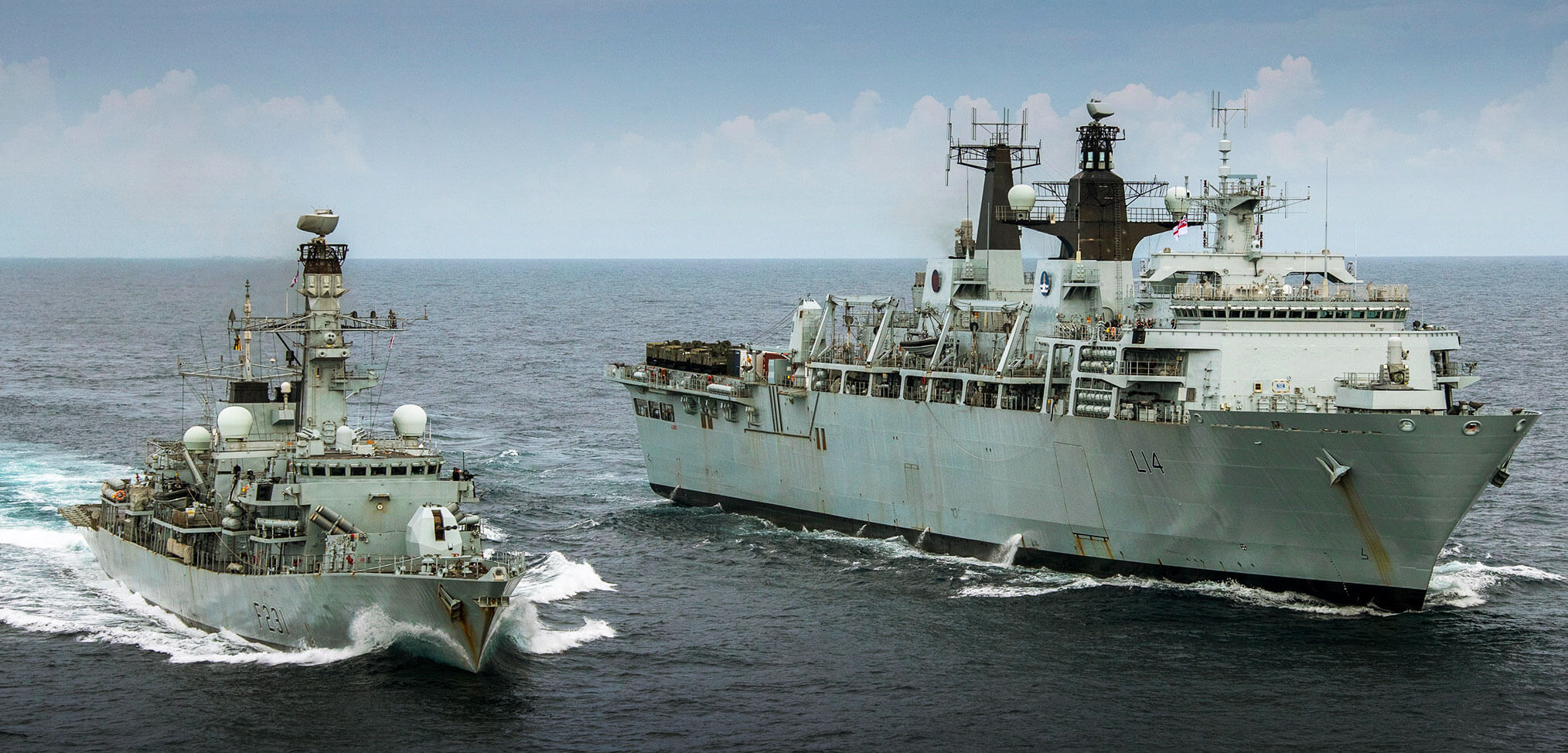
.
The “growing Royal Navy?”
Speaking in the Commons in late December, The Defence Secretary stated: “the Royal Navy has increased its mass”. Claims that the navy is getting bigger should be treated with caution. It is true that after hitting rock bottom there has been a levelling out of vessel numbers after a steep decline since 2010. The announcement in November that the three Batch 1 river class OPVs will be retained in service (instead of being decommissioned when the Batch 2 vessels arrive, as planned in 2015) offers the potential for hull numbers to grow very slightly. It is not clear how long they will stay in service and their retention seems to be driven by Brexit preparations, rather than a strategic plan for the RN. If they were retained long-term and the plans to partially man them with reserves prove sustainable, it will release the batch 2 vessels to be deployed overseas more frequently. (The large displacement of the two aircraft carriers and Tide class RFAs can also lend credence to the claim of increased mass if you crudely measure the size of a navy on combined tonnage!)
The battle to resolve the RN’s manpower problems is ongoing and there is still a long road ahead to bring personnel numbers back up to what is needed. The navy is still over 1,000 people below what it is supposed to have, with critical shortages in key branches. However in 2018 new recruits slightly exceeded the number of people leaving for the first time since 2010 and the small gains are expected to continue. Experience has seen the core ships company requirement for HMS Queen Elizabeth grow from an initial target of 690 to over 800 and rising. This, together with the need for more sailors to man the OPVs, makes the struggle to balance operational requirements with harmony guidelines as difficult as ever.
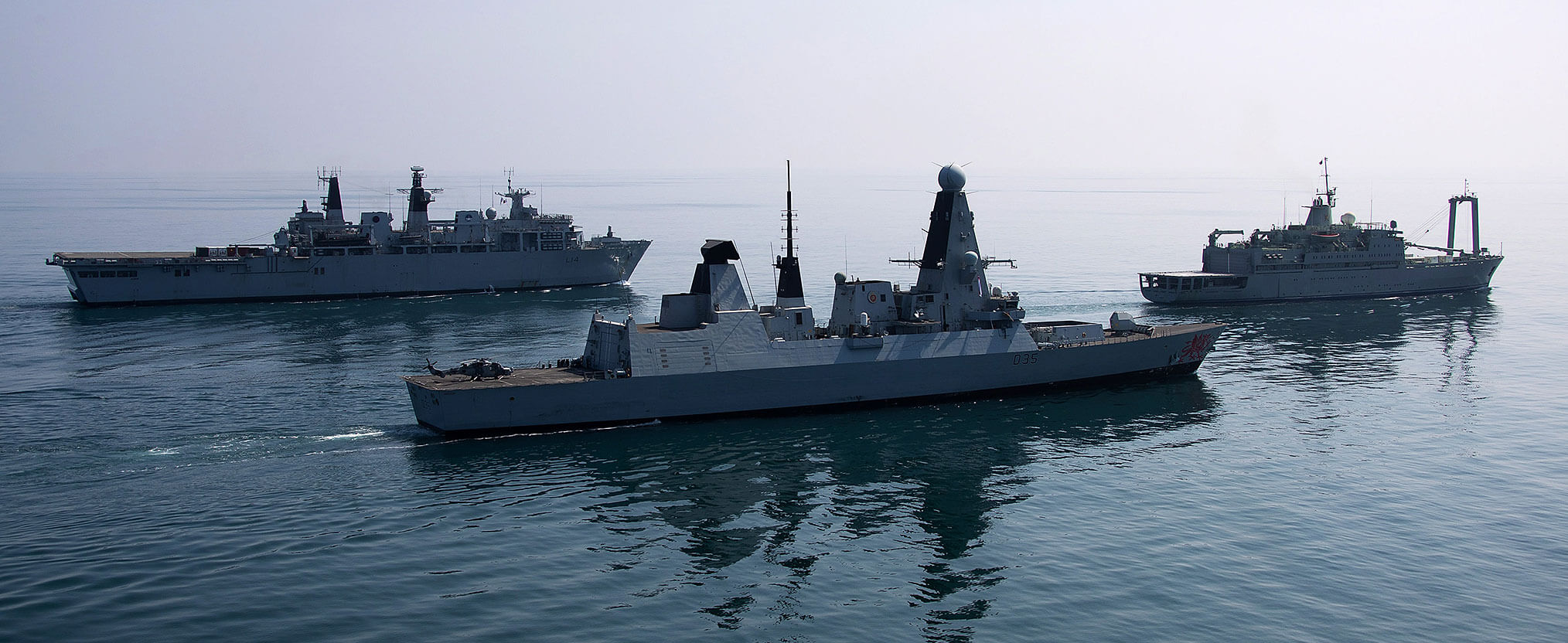
The Modernising Defence Programme (MDP) – Mostly Drawings and Pictures?
On the 18 December, the Defence Secretary delivered the much-delayed Modernising Defence Programme report. Although 28 pages in total, only 17 pages of the report contained text, the rest were nice photos or blank. Light on force structure details and full of aspirational buzzwords, there were still a few items of substance and encouraging signs. Much is made of how the (broadly positive) 2015 SDSR promises are mostly on track. This is true, although depending on who you listen to, there a crunch is coming because the equipment plan is still somewhere between £8 – £15 Billion underfunded.
Compared with previous reviews, threats to the UK have been properly assessed and are actually named (Russia and China). A plan to increase weapons stocks and improve resilience is very welcome and there is an emphasis on procuring and developing technology much faster. The report also contains a very solid piece of work defining “25 tasks that Defence fulfils to help deliver the National Security Objectives”.
It is difficult for the MoD to take major decisions until the Treasury publishes the Comprehensive Spending Round in 2019 and the impacts of Brexit are fully understood. In this context, the MDP is very much a ‘placeholder’, pending potentially more dramatic decisions in the future. For now, at least, the threats to axe the RN’s amphibious capability and further reduce Royal Marine numbers have been fought off. Gavin Williamson has been a robust Defence Secretary for just over a year and inspires mixed reviews. He can point to an extra £500M for defence for 2018–19 and no significant cuts on his watch (yet). It seems unlikely that if the more conformist Michael Fallon had stayed in post that outcomes would have been so positive.
Silence on the silent service
HMS Trenchant surfaced at the North Pole in April and received wide media coverage for her photogenic part in the ICEX with the US Navy. Other than HMS Talent photographed in the Mediterranean, there has been almost no other official coverage of Submarine Service activity. Operational security and the nature of operations is at odds with the need to inform the public and remind politicians of the critical importance of the SSNs. We should not let out of sight, mean out of mind. Monitoring Russian submarines remains the prime task, with a high operational tempo, that makes for challenging but and professionally rewarding patrols. There have even been unconfirmed and worrying reports of modern Russian submarines gaining the upper hand over NATO boats on occasions.
In response to the use of chemical weapons on civilians, US warships and submarines fired Tomahawks missiles into Syria in May but British submarines did not launch weapons, possibly they were involved in keeping watch on Russian boats in the Eastern Mediterranean. Availability of the three Astute has improved since 2017 and the fourth boat HMS Audacious should begin sea trials in the Spring. The dire submarine personnel situation is also improving according to Vice Admiral Tony Radakin, the who is set to become the First Sea Lord next year.
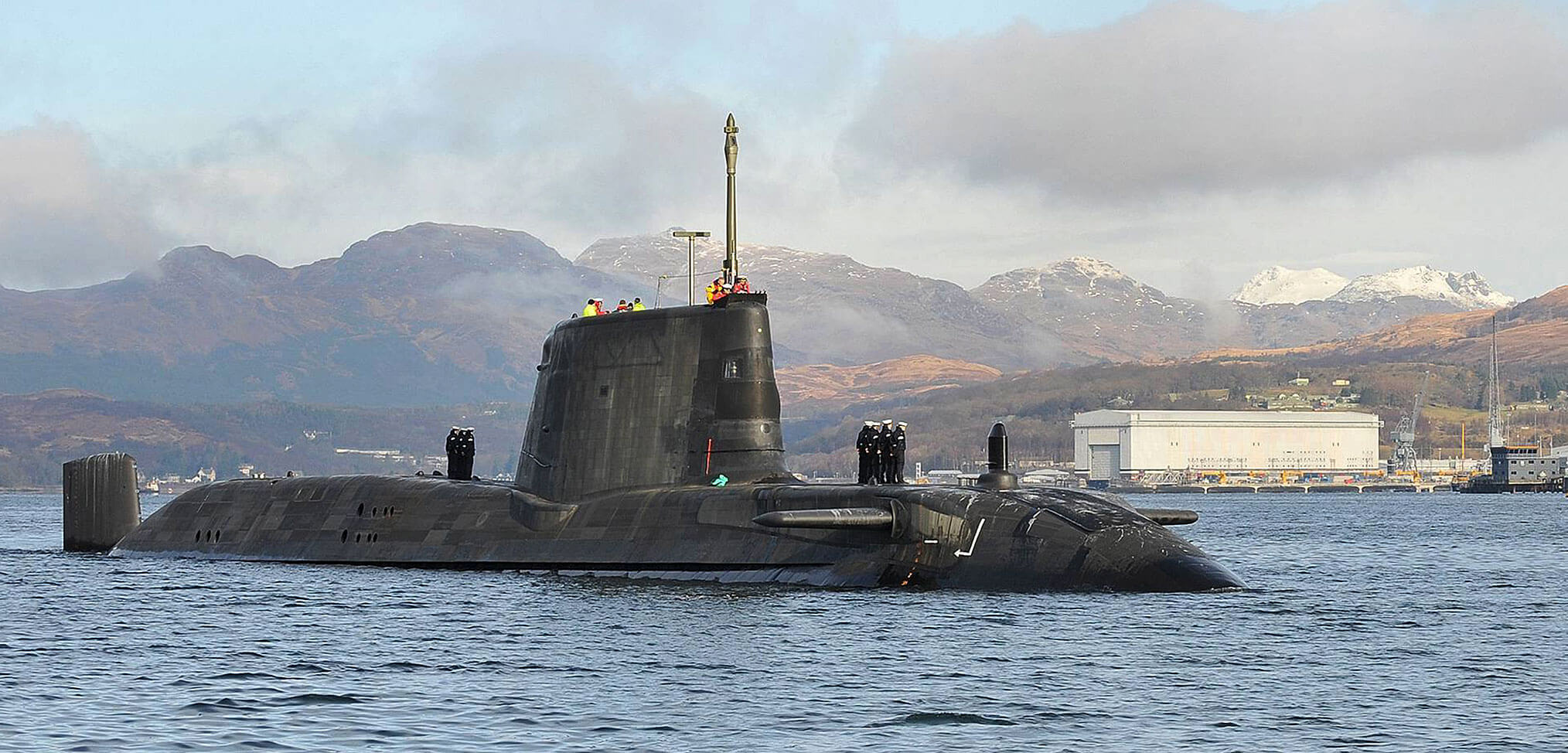
The Dreadnought programme is an MoD priority with a strong new management regime in the shape of the Submarine Delivery Authority (SDA) now in place. £600 million was sensibly drawn down from the contingency fund to ensure highly specialised suppliers stay in business and can deliver critical components for the project in future. The second boat has been named HMS Valiant and work should start on her construction shortly. There was considerable relief that HMS Victorious, Vengeance and Vigilant will not need nuclear refuelling refits which will save considerable sums and reduce the pressure on the force. Conversely, the refit and refuelling of HMS Vanguard in Devonport is reportedly not going well, any delay to her scheduled return to the fleet in 2020 will cause knock-on problems for the deterrent cycle.
Carrier strike on track
HMS Queen Elizabeth is making good progress on the long and complex path to becoming operational. Two sets of helicopter trials in the first half of the year were followed by the successful Westlant18 deployment between August and December. The ship’s visit to New York made a big impression and was a glimpse of the carriers’ great future potential role in promoting diplomacy and trade. The first F-35B landed on the ship on 25th September and stunning imagery from the subsequent developmental flying trials points the way to full carrier strike capability. Progress with F-35 trails was rapid and is now ahead of schedule. The first Shipborne Rolling Vertical Landing (SRVL) by F-35 was demonstrated on 14th October. There is a great deal of data from the trials still to be analysed but confidence in the ship and aircraft is already very high.
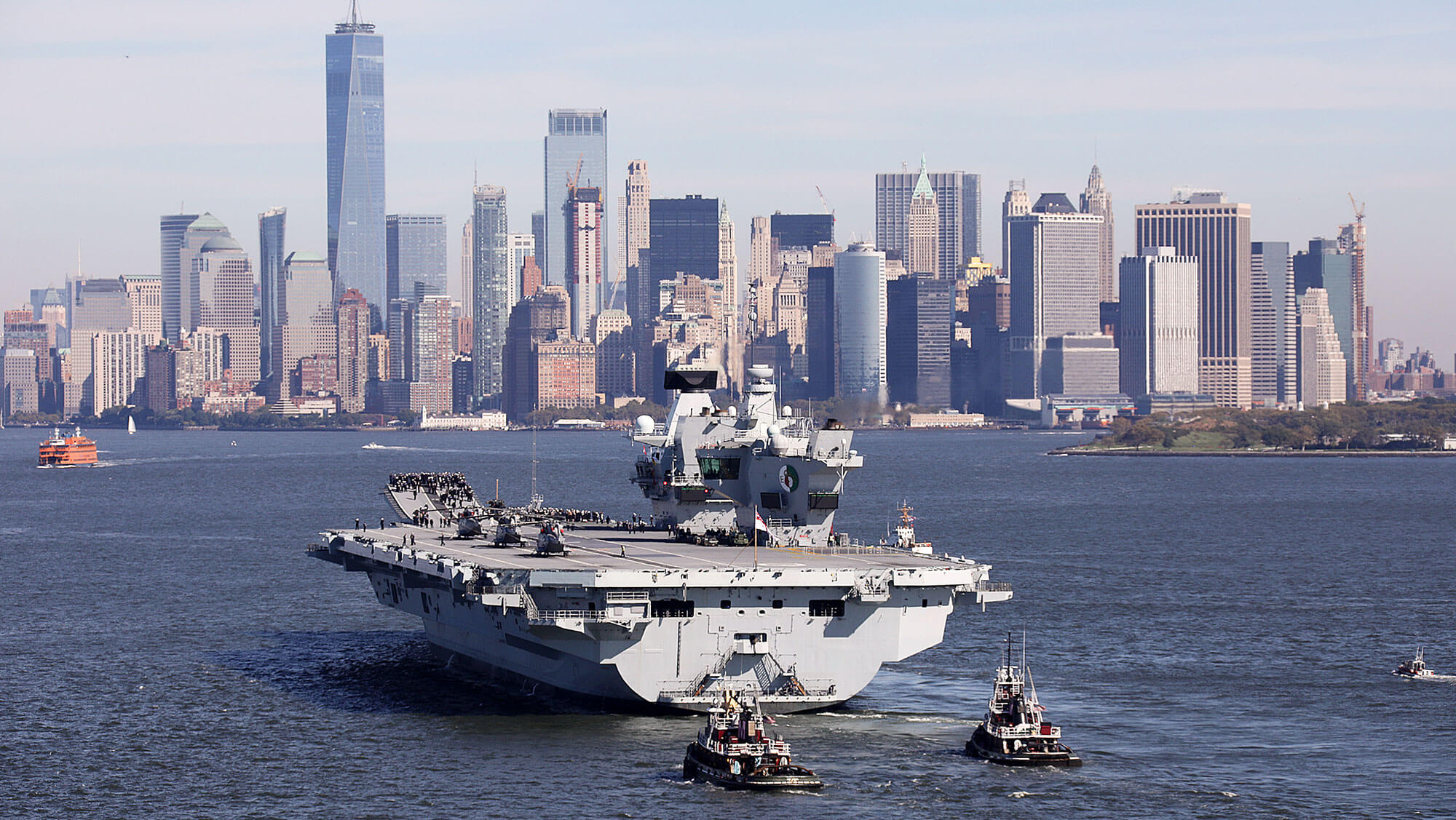
The RN received the first deliveries of the Merlin Mk4 helicopters (ex-RAF Mk3s that have been upgraded and marinised with folding tail and rotors) now painted in their distinctive grey, found to be the best multi-environmental camouflage. Four of these helicopters from 845 Naval Air Squadron embarked on QE for the Westlant18 deployment and performed well. Working with Royal Marines of 42 Commando, 845 NAS started work on Joint Personnel Recovery (JPR) tactics to extract downed pilots and recover sensitive technology from enemy territory.
A cloud on the carrier project horizon is the RAF desire to cap the UK’s F-35B purchase at 48 aircraft and switch to buying land-based F-35As. The man on the street may think 48 will easily provide a permanent fixed-wing airgroup of around 36. Far from it, in very simplistic terms every aircraft of the frontline needs at least two or more in the training and maintenance cycle. For a navy charged with providing continuous carrier capability, a fleet of just 48 F-35Bs would provide pitifully few at sea on a regular basis.
“However, it is spun or justified, buying fewer carrier-capable aircraft means less aircraft for your carrier.”
Mixed fortunes for the frigate programme
The single most disappointing announcement about the future of the RN this year went almost unnoticed. The first Type 26 frigate, HMS Glasgow, will not be operational until 2027 and subsequent ships are being laid down at around 18-month intervals. Taking almost a decade to build this ship is at least 2 years longer than could be reasonably expected. This is evidence of the MoD trying to balance its budgets by slowing the rate at which it needs to write cheques. Not only does it guarantee increased costs in the long-term and risks obsolescence but also deprives the RN of ships it will badly need.
Aside from the glacial construction timetable, there is no question Type 26 is a great design, vindicated by its selection for the Australian Navy in June, followed by the Canadian Navy in October. This very welcome news, one day there could be 32 Type 26 frigates in service, of huge benefit to UK industry and the RN.
During 2018 there were further twists and turns in the Type 31e frigate project. In January Babcock announced the formation of the “Team 31” consortium, launching their “Arrowhead-140” design in May. In February Cammell Laird and BAE Systems published their “Leander” design. The MoD briefly suspended the project for 3 weeks in the Summer but by the close of the year, three bidding consortiums had been funded to develop their designs, including the late entry of the AEUK / TKMS team.
Despite the modest revival in shipbuilding in the UK, the industry remains in a precarious position, with much depending on Type 31 work. Babcock announced the closure of the Appledore shipyard in October and Cammell Laird is making redundancies, lacking enough new build work. Ferguson Glasgow has a healthy order book but experiencing financial problems with the funding of ships being underwritten by the Scottish Government.
Regenerating the RFA
The RFA is in a healthier position than a year ago. The 4 Tide-class tankers are well on their way into service, Only the final ship, RFA Tideforce has yet to begin sea trials. There have been reports of some minor teething problems but they look likely to be a great success in the long term. The 3 Bay-class landing ships continue to be worked hard, two in the Gulf and one in the Caribbean in 2018. RFA Fort Victoria, Wave Knight and Argus completed refits late this year and are regenerating prior to active service in 2019. RFA Wave Ruler and Fort Austin remain laid up while RFA Fort Rosalie is in maintenance at Cammell Laird. The Future In-Service Support (FISS) contract to maintain the RFA fleet for the next decade was awarded this year and will utilise shipyards across the UK. Some sort of plan to replace RFA Argus would be at the top of the RFA wish list in 2019.
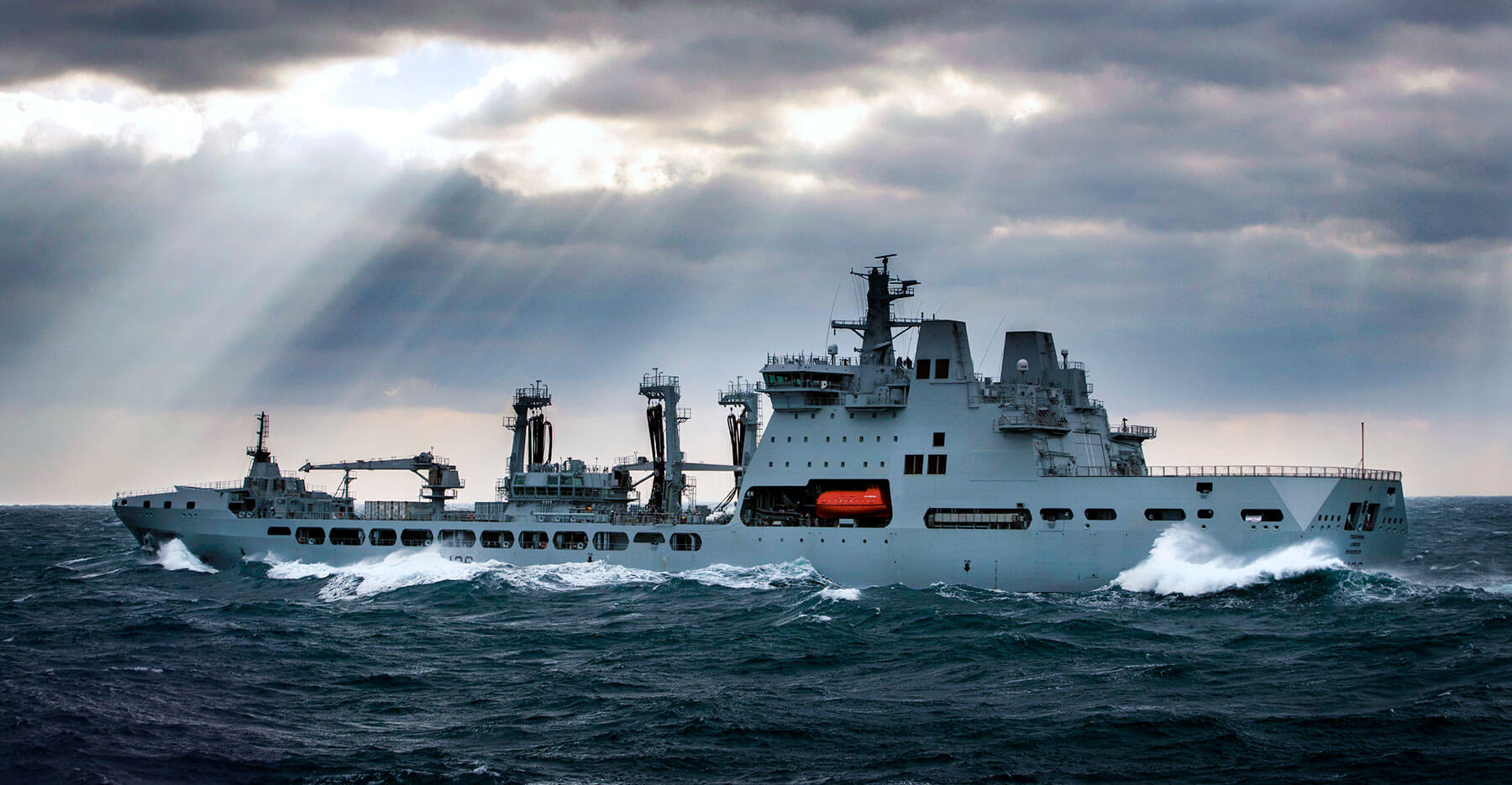
2019?
With both sides of the polarised Brexit debate making extreme claims, it is hard to analyse or predict what next year will bring. For good or bad, the implications of Brexit in March 2019 cast a shadow of uncertainty and political turmoil over the nation. Should there be an economic impact of sufficient magnitude to reduce tax receipts or require government interventions, then public finances could at least temporarily, become very tight. Historically, the MoD has often been the first port of call for weak politicians looking to make cuts in public spending. Defence cuts would be a grave mistake at a time of crisis and the Royal Navy, in particular, is a prime soft and hard power tool for promoting British trade and diplomacy interests around the world as we leave the European Union.
Thank you to everyone who has supported SAVE THE ROYAL NAVY this year, especially those who have contributed writing, helped with research and supplied photos. We particularly appreciate those who have made donations and the thousands who have posted constructive comments on the website and social media.
This comprehensive article from Save the Royal Navy provides an excellent review of the challenges and successes of the Royal Navy in 2018. Save the Royal Navy is a website run by a private individual with the aim of supporting and saving the Royal Navy from further cuts and to publicise the need for it to be able to protect Britain’s interests at home and abroad. https://www.savetheroyalnavy.org
First published on 27th December 2018

Comments on A year in review – the Royal Navy in 2018